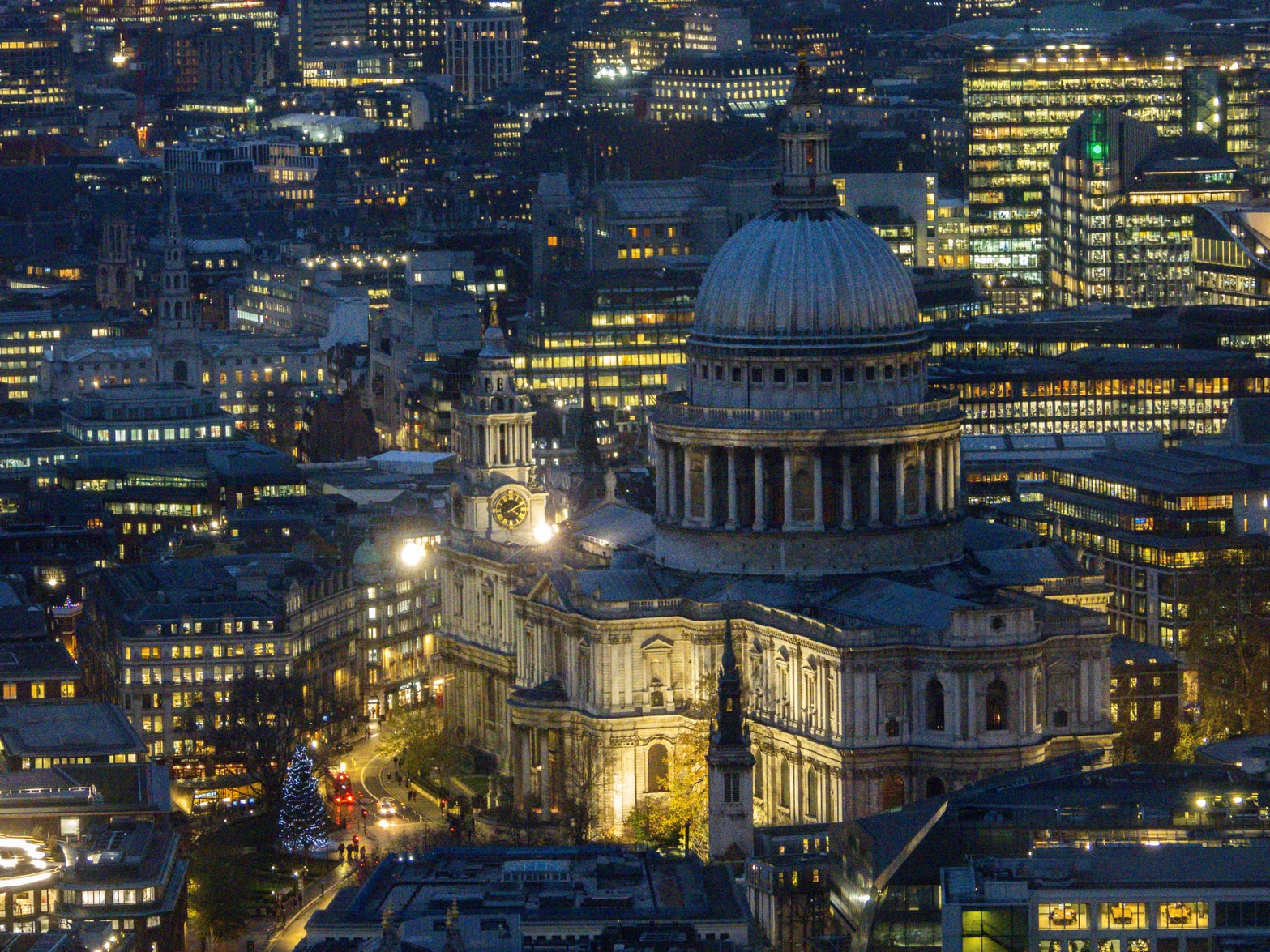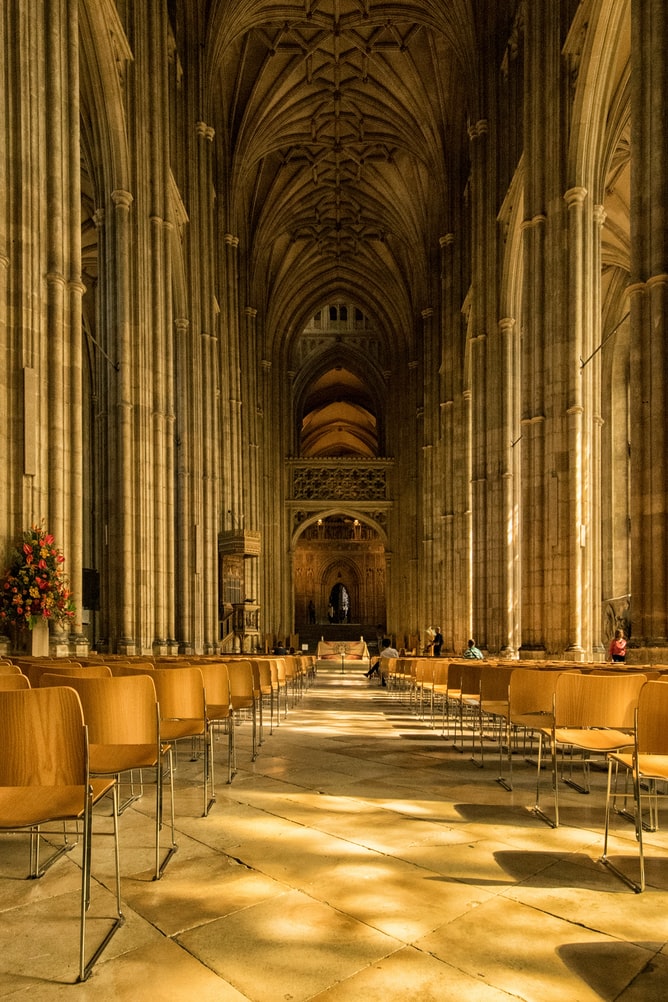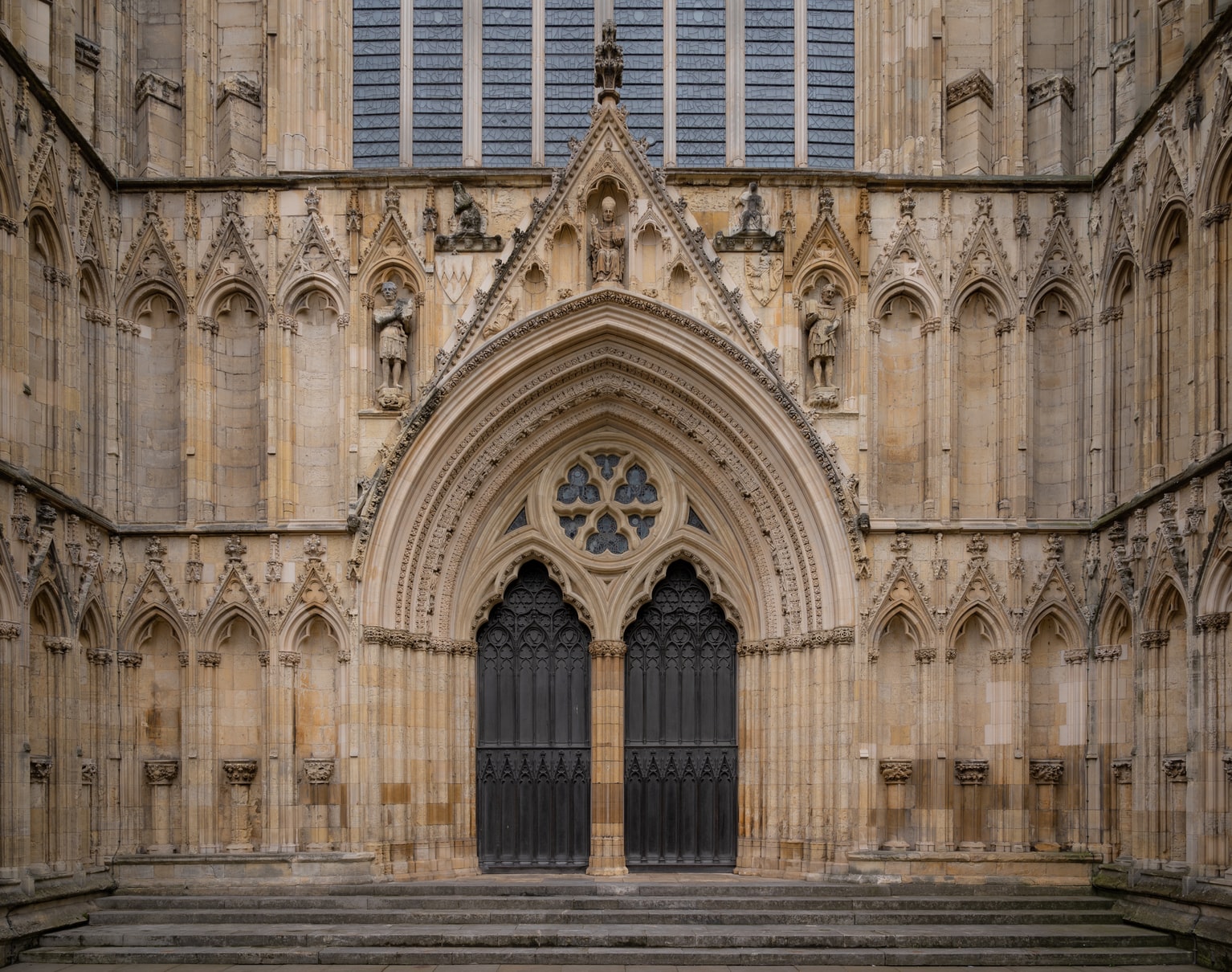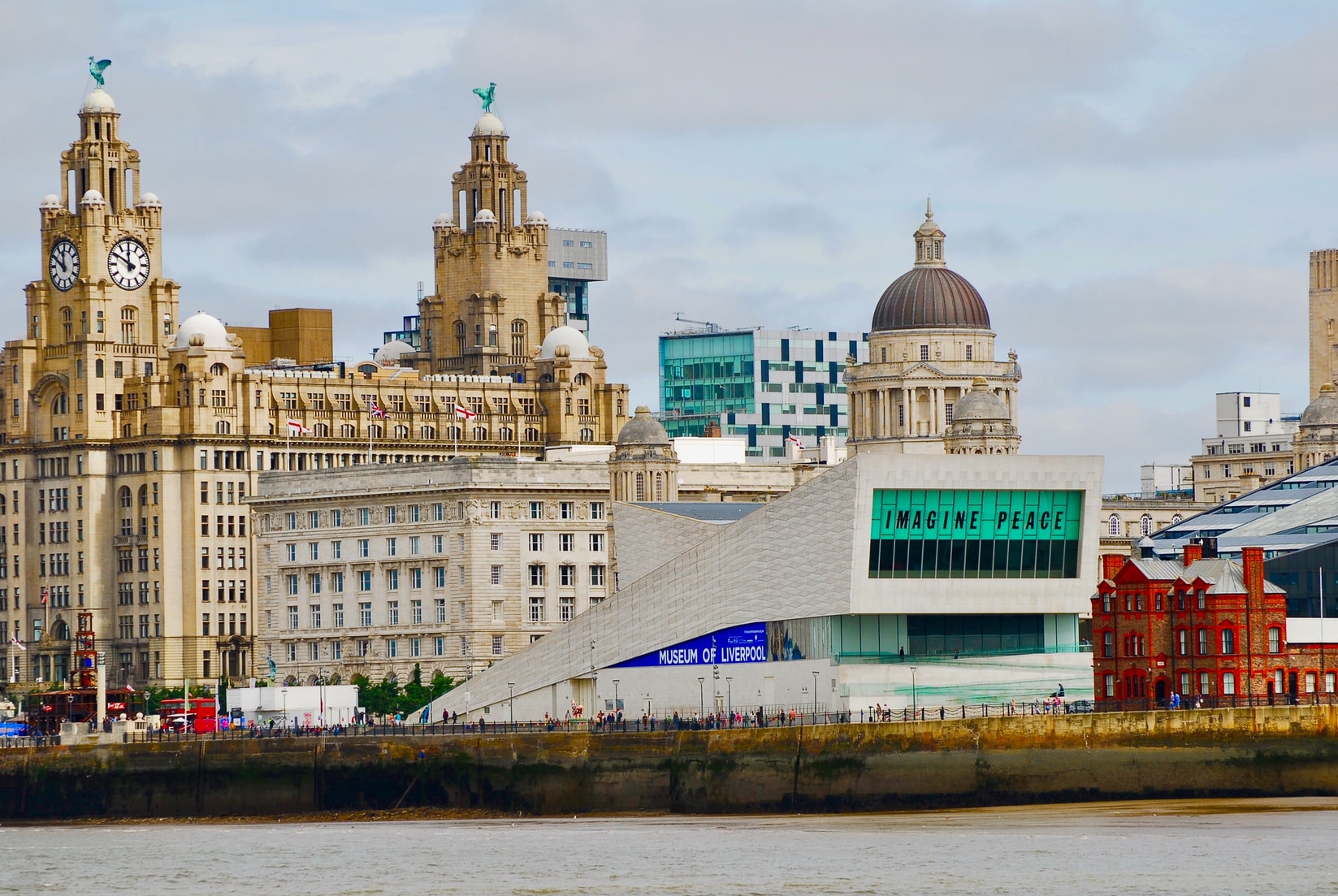The Complete Guide to Cathedral Cities in the UK
Here is your complete guide in visiting cathedral cities in UK.
Author:Tobey StricklandReviewer:Iram MartinsDec 25, 202234K Shares693.9K Views

Magnificent stained glass, soaring vaults, resounding organs: British cathedrals exude power and importance. From Ely to Exeter, Bangor to Bradford, they present wonderfully civilized and civilizing aspects of the nation. These spiritual and cultural hubs comprise an inherent part of Britain's rich history – and offer a fine selection of tourist attractions.
Across the UK, there are 70 cathedrals, ranging from Anglican to Roman Catholic and even Greek Orthodox – Saint Sophia of the Archdiocese of Thyateira and Great Britain, in Moscow Road, London W2 (020-7229 7260; www.stsophia.org.uk), which was the church of the Greek government-in-exile during the Second World War.
The cathedral is open to visitors, but they are asked to avoid services, (details on the website). While work on the pews is being carried out, the main entrance is closed, but visitors can use the back entrance.
Not all large and impressive churches are cathedrals. Westminster Abbey, for example, does not have that distinction, for all its royal associations and pageantry. A cathedral (from the Greek Kathedra, or seat, hence the Latin cathedra, a bishop's throne) is the seat of a bishop and is the principal church of the area or diocese, he administers.
Tell Me A Canterbury Tale
Canterbury Cathedral is the focus of England's most ancient diocese. The city was the place that Christianity first took root in Britain, and today its cathedral presents a sublime mix of Romanesque and Perpendicular Gothic architecture.
Inside are stunning 13th-century stained-glass windows, a lovely Norman crypt, and royal tombs including those of Henry IV and the Black Prince. But the cathedral is most famous as the site of the assassination of Archbishop Thomas à Becket in 1170.
His shrine was destroyed in the Reformation, and a modern sculpture now marks the spot in the north-west transept where he was murdered.
Canterbury Cathedral is open to visitors Monday to Saturday 9am-5pm; Sundays 12.30-4.30pm; admission £6.50 (01227 762 862; www.canterbury-cathedral.org). It is one of a trio of Canterbury buildings that collectively form a Unesco World Heritage Site, the others being the ruins of St Augustine's Abbey (Wed-Sun, 10 am-4 pm, admission £3.90), and the 6th-century St Martin's, the oldest parish church in England (Tuesday, Thursday and Saturday, 11 am-3 pm, admission free).
The cathedral's three towers rise above a city that still retains some of its medieval walls, while Canterbury's pedestrianized heart offers enough timber-frame buildings to provide a suitably old-world feel. On St Margaret's Street, just across from the cathedral, you can enter a fun, if slightly contrived, medieval set-up.
The Canterbury Tales exhibition (daily 10 am-4 pm; admission £7.50) is a celebration of Chaucer's classic work. Visitors take a trip through a reconstruction of the pilgrimage route from London to the shrine of St Thomas à Becket, while along the way, audio headsets recount some of Chaucer's stories. Also, a reconstruction of 14th-century England is presented, complete with smells and waxworks in medieval garb.
You can take another evocative walk two weeks from now. On Saturday 8 December, it's the St Nicholas Festival Parade. Led by a dressed-up St Nicholas (looking, appropriately, like a cross between Santa and a bishop), crowds and musicians progress from Canterbury's medieval gateway of Westgate Towers to the cathedral for a short service and carols. The event starts at 1 pm (call the tourist information centre on 01227 378 100 or visit www.canterbury.co.uk for details).
How About Grandeur?
With its sublime stained-glass windows, mysterious crypt and ornate chapter house, York Minster is the largest Gothic cathedral in northern Europe. There has been a church on this site since the early 7th century, but the current building dates from the 1220s, commissioned by Archbishop Walter de Grey, who had ambitions to create a church at least as big and bold as Canterbury Cathedral.
York Minster opens to visitors Monday to Saturday 9 am-5 pm and Sunday noon-3.45pm; admission £5.50 (01904 557216; www.yorkminster.org). For a great view of gargoyles as well as a wonderful outlook over York's medieval rooftops and alleyways, climb the 275 steps to the top of the central tower (daily 10 am until dusk, admission £4). Then wander the old city on foot, the ancient core still for the most part surrounded by medieval walls that are punctuated by four original gateways.
The Shambles is the most famous and tourist- trodden of York's narrow lanes, yet the little alleys around it are still full of charm. St Helen's Square is where you'll find street musicians, as well as Bettys Café Tea Rooms (at Nos 6-8), a York institution, complete with a pianist playing every evening from 6-9 pm.
Heavenly Capital?
For Britain's crowning glory of cathedral splendour, head south to St Paul's in the City of London (open Monday to Saturday 8.30 am-4 pm; admission £9.50; 020-7246 8357; www.stpauls.co.uk). Christopher Wren's domed masterpiece is the fourth cathedral to occupy the site by the banks of the Thames, its predecessor having been destroyed in the Great Fire of 1666.
The magnificent design took 35 years to complete, work undertaken during the reign of five different monarchs. The interior offers glittering mosaics and works by artists from Holman Hunt to Henry Moore. The area immediately around has recently seen radical redevelopment.
To the south, the Millennium Bridge provides a dramatic riverside approach. And the adjacent Paternoster Square has been overhauled and is now home to the London Stock Exchange as well as a range of inviting cafés.
London itself is a baffling case when it comes to defining "city" status. This sprawling conurbation is not officially a city at all, but it contains two designated cities. The first is the City of London, which encompasses the original Roman settlement beside the Thames and is Britain's second-smallest official city.
The second city in London is Westminster, which may lack an Anglican cathedral but contains a fine neo-Byzantine Roman Catholic cathedral at 42 Francis Street, London SW1 (Mon-Fri 7 am-7 pm; weekends 8 am-7 pm; admission free; 020-7798 9055; www.westminstercathedral.org.uk).
And The Very Smallest?
Tiny St. Davids in south-west Wales has a population of about 2,000. This is a picture-postcard place, essentially a village with a gracious Gothic cathedral that lies semi-hidden in the river Alun valley.
The church was built on the site of a 6th-century monastery and has been a pilgrimage spot for centuries – and for all the wild beauty around, there is a wonderfully serene atmosphere here. St Davids Cathedral is open daily 11 am-4 pm (from 9 am in the summer); suggested donation of £3 (01437 720 199; www.stdavidscathedral.org.uk).
Within the cathedral precincts, you can also visit the great ruins of the Bishop's Palace (Monday-Saturday 9.30 am-4 pm; Sunday 11 am-4 pm; admission £2.90) featuring magnificent arched parapets and the remains of two impressive halls.
The miniature city is surrounded by spectacular coastal countryside, and part of the joy of coming here is in striding out to sandy beaches and along craggy clifftops – you can reach St. Non's Bay and Caerfai Bay simply by walking from the "city" centre.
In Somerset, Wells, with around 10,500 residents, challenges the City of London as England's most diminutive city. Just six miles from Glastonbury, this is a peaceful and dignified place, dominated by a magnificent 12th-century cathedral that is beautifully set in a walled close.
The west front is particularly impressive, decorated with 356 figures carved out of honey-coloured stone, while inside, the east end contains striking, modern-looking "scissor arches", which were actually a medieval engineering solution when the central tower began to sink. Wells Cathedral is open daily 7 am-6 pm; suggested donation of £5.50 (01749 674 483; www.wellscathedral.org.uk).
On the south side of the close is the Bishop's Palace (Wed-Sun 10 am-4 pm; admission £5), home to the Bishops of Bath and Wells since 1206. Its lovely 14-acre grounds are partly enclosed by a moat where swans ring a bell when they want to be fed. Over on the north side of the cathedral precinct, the Vicar's Close is a cobbled lane lined with 14th-century houses that were built for the choristers. It is said to be the oldest street in England.
Other Close Encounters?
In Wiltshire, the next-door county to Somerset, Salisbury Cathedral sits splendidly in a world of its own: its 80-acre Close is the largest cathedral precinct in Britain. Originally, it contained houses for the priests, canons and church workers serving the great 13th-century church.
These have since been much rebuilt so that today, the buildings of the close are a great mix, from a medieval hall to elegant 18th-century houses. Some of these are now intriguing museums, including the Salisbury Museum at The King's House (daily except Sundays, 10 am-5 pm; admission £5) and the National Trust's Mompesson House, a fine Georgian building with an exceptional interior (Sat-Wed 11 am-5 pm; admission £4.70). The cathedral is open 7.15 am-6.15 pm daily, with a requested donation of £5 (01722 555 118; www.salisburycathedral.org.uk).
You can take a 24-mile walk from Salisbury to another great cathedral city, Winchester, in neighbouring Hampshire. The route to take is the Clarendon Way, which runs along Clarendon Park on the eastern edge of Salisbury and across the Test Valley before dropping down to the River Itchen and Winchester (see www3.hant.gov.uk/walking for a map).
Winchester was the de facto capital of England in the early 11th century. It also boasts the Round Table of the legendary King Arthur, which is in the medieval Great Hall at the top of the High Street (open daily 10 am-5 pm, admission free).
But the cathedral remains Winchester's finest sight, containing the longest medieval nave in Europe, while within its atmospheric old walled close are wonderfully creaky old timber-frame buildings dating from the 15th century.
It opens at 8.30 am-6 pm daily; Sundays until 5.30 pm; admission £6. From 30 November, a Christmas ice rink will be in operation in the close (tickets from £7.25; 01962 857 276; or online at www.winchester-cathedral.org.uk). The main cathedral number is 01962 857 2000.
Ancient And Modern?
One of the oldest cities in England is also one of the newest. Much of Coventry was flattened by Luftwaffe bombing raids in the Second World War. After the war, the approach taken with the ruined cathedral was very different from that in its German twin city, Dresden.
Instead of painstakingly restoring the original, Basil Spence designed a stunning modern cathedral that has been drawing visitors ever since it was completed in 1962.
The architect kept the ruins of the old cathedral as a garden of remembrance and built beside it a bold modernist church, which he filled with specially commissioned art, including stained-glass windows by John Piper and a striking glass screen engraved by John Hutton. It opens daily 9am-5pm; suggested donation £4 (024 7652 1200; www.coventrycathedral.org.uk).
You can see more of John Piper's work in Chichester, the county town of West Sussex. This appealing little harbour city offers Roman walls, Norman towers, a 13th-century priory, and a great market cross completed in 1501 to give traders some shelter.
But Chichester's cathedral, dating from the late 11th century, remains its most breathtaking building. It is open daily 7.15 am-6 pm; free admission, but donations welcome (01243 782 595; www.chichestercathedral.org.uk). The interior is a wonderful blend of Gothic styles, and also presents some striking 20th-century art: a window by Marc Chagall, a painting by Graham Sutherland, and tapestries by Ursula Benker-Schirmer and John Piper.
Double Act?
Several British cities can boast both an Anglican and a Roman Catholic cathedral. Among the most impressive is Liverpool, next year's European Capital of Culture. At either end of Hope Street are two of the city's great landmarks.
The Anglican Liverpool Cathedral (daily 8 am-6 pm; free admission; 0151 709 6271; www.liverpoolcathedral.org.uk) is an enormous neo-Gothic construction designed by Giles Gilbert Scott and completed in 1910. Quite apart from the wonder induced by its sheer size, its principal attractions are the Great Space exhibition (admission £4.75) about how the cathedral was built; and its massive tower offering spectacular views (£4.25 for the "Tower Experience".
The Roman Catholic Metropolitan Cathedral of Liverpool turned 40 this year. The striking, futuristic building has earned the nickname "Paddy's Wigwam" because of its tepee-like structure. It opens 8am-6pm daily (Sundays to 5pm), admission free (0151 709 9222; www.liverpoolmetrocathedral.org.uk).
Holy Of Holies?
The holiest city on the island of Ireland is Armagh. It was in Armagh that St Patrick established a base from which to spread Christianity across Ireland, and the earliest church dates from the 5th century. Armagh is a relatively small community, yet possesses a dramatic combination of Roman Catholic and Anglican cathedrals.
These two imposing churches face each other from the vantage points of small hills. Stand on the steps of St Patrick's Catholic Cathedral (open daily during daylight hours, admission free; 028 3752 2638; www.armagharchdiocese.org), and you get a great outlook over this ancient and much-rebuilt town. The church dates from 1840 although, poignantly, the building was interrupted by the Great Famine. While the exterior looks slightly austere, the interior is an amazing kaleidoscope of marble, mosaics and paintings.
Over on the hill of Drum Saileach, St Patrick's Anglican Cathedral stands on the site of St Patrick's original church, and also offers impressive views. The current building dates from the 13th century but was much restored and refurbished in the 1800s. It is open daily 10am-4pm, admission free (028 3752 3142; www.stpatricks-cathedral.org).
The Link Between Cities And Cathedrals
The formal link between cathedrals and cities dates from the Reformation and the founding of the Church of England. Today, the term "cathedral city" technically refers only to Anglican (Church of England, Church of Ireland, Church in Wales and Scottish Episcopal Church) cathedrals.
As part of the reorganization of the church (and destruction of elements of it) in the 1540s, Henry VIII created six new dioceses, each, of course, with its own cathedral, and granted the cathedral towns city status.
There had previously been no such official designation. In the meantime, old cathedral towns, founded long before in the Anglo-Saxon period, were by extension deemed to be cities from "time immemorial".
There were no new cities, or cathedrals, created between then and the Industrial Revolution, but from the mid-19th century, the growth in urban population led to some towns being granted city status: Manchester, Worcester and Liverpool, for example. At first, it was important for the new cities to have cathedrals, but this proved hard to sustain. Stoke-on-Trent and Leeds, for instance, have no Anglican cathedral.
Conversely, not all cathedrals are now situated in cities: there are 15 Anglican cathedrals located in UK towns: at Bury St Edmunds, Guildford and Enniskillen, for example.

Tobey Strickland
Author

Iram Martins
Reviewer
Latest Articles
Popular Articles


